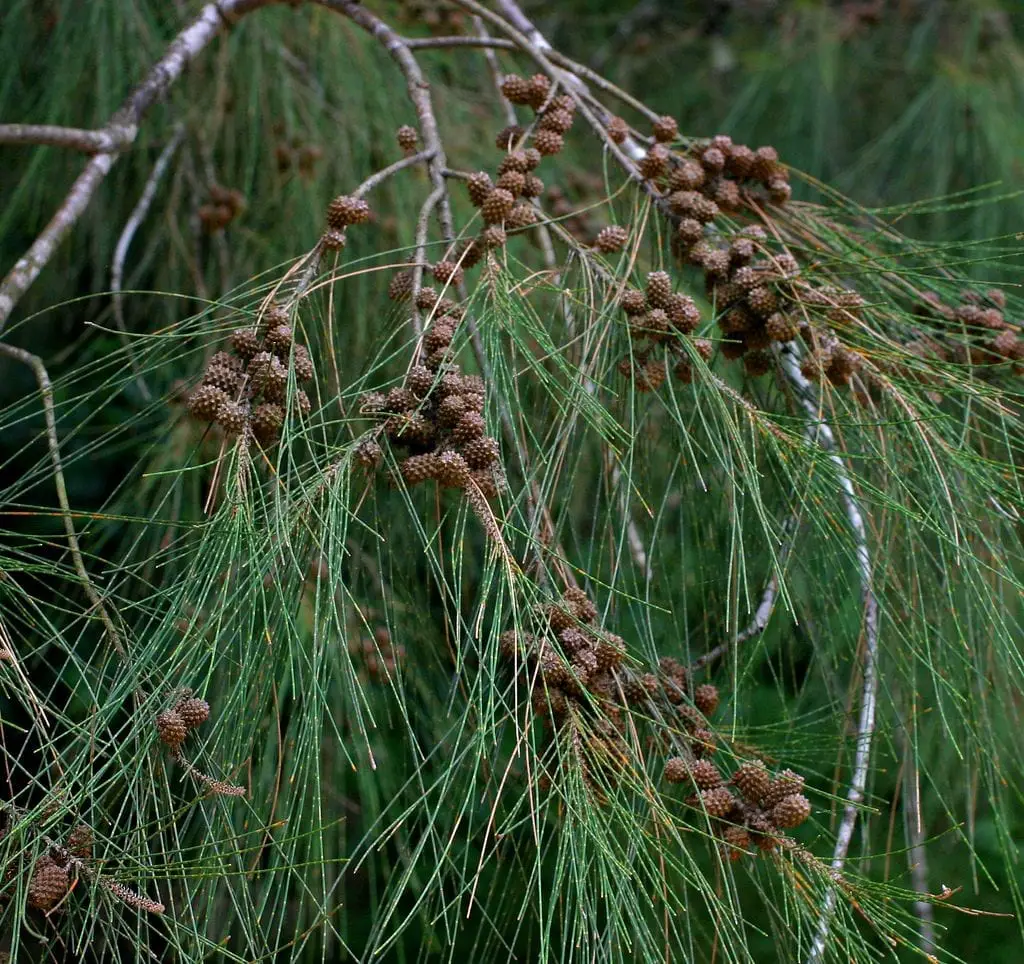
Image – Flickr / Tony Rodd
The Casuarina Cunninghamiana It is a tree that, despite being quite similar to conifers, actually has nothing to do with them. But it is also very decorative, and quite easy to care for 😉. In fact, it is widely used as an urban plant species, especially in climates where rainfall is usually low.
For this reason, if you live in an area where temperatures rise a lot in summer and in winter there are frosts but they are rather weak, read on to find out everything about this tree.
Origin and characteristics

Image – Wikimedia / Bidgee
Our protagonist is an evergreen tree whose scientific name is Casuarina Cunninghamiana. It is popularly known as river oak, Australian pine, or casuarina and is native to New South Wales and Queensland in Australia. Grows to a maximum height of 30 meterswith a more or less pyramidal crown composed of elongated and linear leaves 8 to 10 cm long.
It’s dioecious. The male flowers are terminal hanging spikes, and the female ones are conical catkins, also hanging. The fruit is globose, green when young and dark brown when ripe, and measures 1cm in diameter. The seeds are 3-4mm.
What are their cares?

Image – Wikimedia / Bidgee
If you want to have a copy, we recommend that you provide it with the following care:
- Location: it must be outside, in full sun.
- Earth: grows in all types of soils, but prefers those with good drainage. It is not a plant to have in a pot.
- Irrigation: it has to be watered about 3 times a week in summer, and every 3-4 days the rest of the year.
- Subscriber: in spring and summer, with ecological fertilizers once a month.
- Multiplication: multiplies by seeds in spring.
- Planting time: in spring, when the risk of frost has passed.
- Rusticity: resistant up to -7ºC.
What did you think of Casuarina cunninghamiana? Did you know her?

